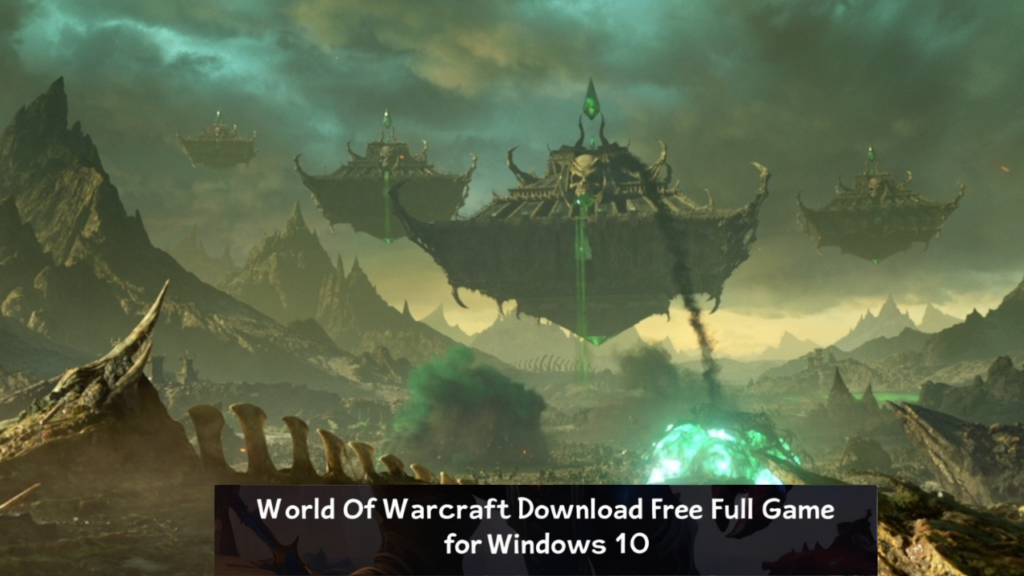World of Warcraft (WoW), a game developed by Blizzard Entertainment, is one of the most influential and enduring massively multiplayer online role-playing games (MMORPGs) in gaming history. It was released in 2004 and has been fascinating millions of players around the world with its expansive lore, immersive gameplay, and vibrant community. This article delves into the game’s history, gameplay mechanics, expansions, and cultural impact.
The Origins of World of Warcraft
The roots of World of Warcraft go back to the Warcraft series, which started with Warcraft: Orcs & Humans in 1994. The series developed through several titles, leading to Warcraft III: Reign of Chaos (2002) and its expansion, The Frozen Throne (2003). These games created a rich universe full of diverse races, intricate politics, and epic conflicts, all of which laid the groundwork for the MMORPG experience.
Game Mechanics
Character Creation
Players start off by building a character. They can choose to be of two main factions: Alliance and Horde. Each has its races and classes. Among the races are Humans, Orcs, Night Elves, and Undead. Classes vary from Warrior and Mage to Druids and Warlocks. Character designing allows players to personalize their avatars in terms of their appearance and abilities.
Exploration
The world of Azeroth is vast and diverse, comprising several continents, including Kalimdor and the Eastern Kingdoms. Players can explore lush forests, desolate deserts, towering mountains, and ancient ruins. Each zone features unique quests, enemies, and lore, encouraging exploration and discovery.
Quests and Leveling
Quests are at the center of WoW’s gameplay. The player performs tasks for non-player characters in order to get experience points, gold, and items. The leveling system allows characters to advance from level 1 to a maximum level that has increased with each of the expansions. Players can also participate in various activities such as dungeons, raids, and PvP combat.
Professions and Crafting
In addition to combat, players can learn professions to gather resources and craft items. Professions are split into two categories: gathering (such as Mining, Herbalism) and crafting (such as Blacksmithing, Alchemy). This system gives more depth to the economy and promotes player interactions.
Expansions
The game has had many expansions that introduced new content, mechanics, and storylines. Some of the biggest expansions include:
The Burning Crusade (2007): Introduced the shattered world of Outland, new races (Blood Elves and Draenei), and raised the level cap to 70.
Wrath of the Lich King (2008): Set in Northrend, this expansion focused on the storyline of the Lich King, introducing the Death Knight class and raising the level cap to 80.
Cataclysm (2010): This expansion brought a totally new landscape to Azeroth with new zones and a level cap of 85.
Mists of Pandaria (2012): Brings forth the Pandaren race and Monk class and themes of harmony and conflict.
Warlords of Draenor (2014): This one focused on an alternate universe version of Draenor, with the most significant graphical updates up to date, and a level cap of 100.
Legion (2016): The Burning Legion brought back to Azeroth and introduced Demon Hunters. Max level was also raised to 110.
Battle for Azeroth (2018): Emphasized the clash between Alliance and Horde; new continents, new races
Shadowlands (2020): It touched upon the realms of the afterlife and the Covenant system with a level cap of 60.
Dragonflight (2022): Focus on the Dragon Isles and introduction of new races of dragons, along with a new class-the Evoker.
Community and Cultural Impact
World of Warcraft has fostered a very active community of millions of players around the globe. Player guilds and social interactions enhance the gaming experience by creating friendships and rivalries. The game has inspired many events, including conventions like BlizzCon, where fans come together to celebrate their passion for the franchise.

The cultural impact of WoW extends beyond gaming itself. It has influenced memes, social media trends, and even academic studies on online interactions and virtual economies. It has also spawned various adaptations in novels, comics, and even a feature film.
Features World of warcraft
- Immersive World: Explore the vast continents of Azeroth, filled with diverse environments and rich lore.
- Diverse Races and Classes: Choose from multiple races and classes, each with unique abilities and traits.
- Epic Quests: Engage in a wide variety of quests, from simple tasks to epic storylines.
- Raids and Dungeons: Team up with friends to tackle challenging raids and dungeons for rare loot.
- Player versus Player (PvP): Compete against other players in various PvP modes.
- Regular Updates: Benefit from frequent updates and expansions that add new content and features.
- Free Trial: Play up to level 20 without any cost.
- In-Game Events: Participate in seasonal events and special in-game activities.
- Community Guilds: Join or create guilds to connect with other players.
- Cross-Platform Play: Play with friends across different platforms, including Mac.
- Extensive Customization: Tailor your character’s appearance and abilities to suit your playstyle.

Technical Specifications of World of warcraft
- Version: Latest (includes all expansions)
- Interface Language: Multiple languages available (English, Spanish, French, etc.)
- Designed by: Blizzard Entertainment
- Type of Game/Software: MMORPG
- Audio Language: Multiple languages available
- Uploader / Repack Group: Official Blizzard release
- File Name: World_of_Warcraft_Setup.exe
- Download Size: Approximately 100 GB (varies by expansion)

System Requirements World of warcraft
For Windows PC
- Operating System: Windows 10 (64-bit)
- Processor: Intel Core i5 or AMD equivalent
- Memory: 8 GB RAM
- Graphics: NVIDIA GeForce GTX 660 or AMD Radeon HD 7950
- DirectX: Version 11
- Storage: SSD with 100 GB available space
For MacBook
- Operating System: macOS 10.12 or later
- Processor: Intel Core i5 or Apple M1
- Memory: 8 GB RAM
- Graphics: NVIDIA GeForce GT 750M or AMD Radeon R9 M290
- Storage: SSD with 100 GB available space

